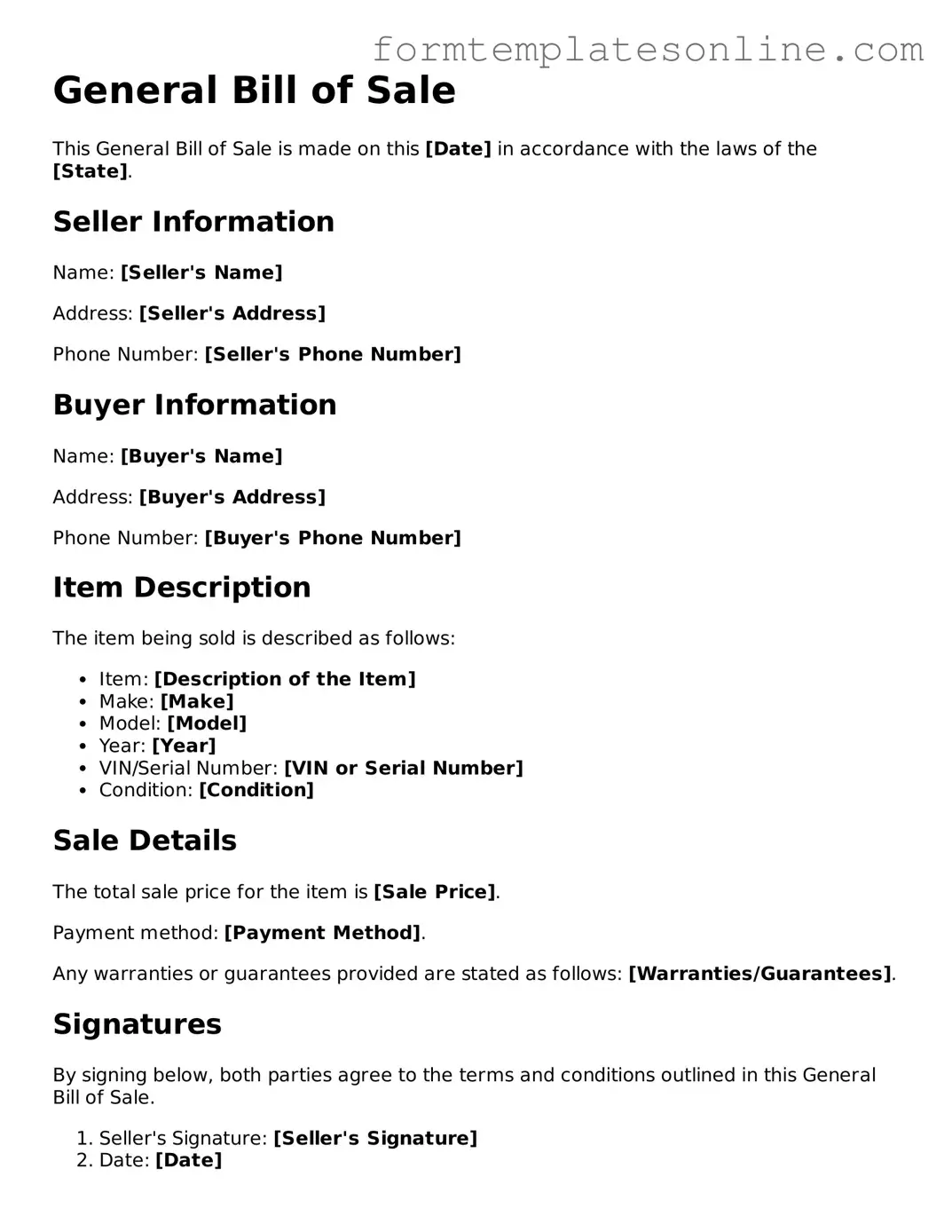What is a General Bill of Sale?
A General Bill of Sale is a legal document that serves as a receipt for the sale of personal property. It details the transaction between a buyer and a seller, including information about the item being sold, the sale price, and the date of the transaction. This form is essential for both parties as it provides proof of ownership transfer and can be used for various types of personal property, such as vehicles, furniture, and equipment.
Why do I need a General Bill of Sale?
Having a General Bill of Sale is important for several reasons. First, it protects both the buyer and the seller by documenting the terms of the sale. This can help prevent disputes over ownership or payment in the future. Additionally, if the item sold is a vehicle, many states require a bill of sale for registration purposes. It also serves as a record for tax purposes, ensuring that both parties report the transaction accurately.
What information is typically included in a General Bill of Sale?
A General Bill of Sale usually includes the following details: the names and addresses of both the buyer and the seller, a description of the item being sold (including make, model, and serial number if applicable), the sale price, the date of the transaction, and any warranties or conditions of the sale. Both parties should sign and date the document to validate the agreement.
Is a General Bill of Sale legally binding?
Yes, a properly completed General Bill of Sale is legally binding. It acts as a contract between the buyer and the seller, outlining the terms agreed upon by both parties. However, to ensure its enforceability, it’s crucial that the document is filled out accurately and signed by both parties. In some cases, having a witness or notarizing the document can add an extra layer of protection.
Can I create my own General Bill of Sale?
Yes, you can create your own General Bill of Sale. Many templates are available online, which can help guide you in drafting the document. However, it’s essential to ensure that your version includes all necessary information and complies with your state’s laws. If you’re unsure, consulting with a legal professional can provide clarity and ensure that your bill of sale meets all requirements.
What should I do after completing a General Bill of Sale?
After completing a General Bill of Sale, both the buyer and the seller should keep a copy for their records. The seller should also ensure that the buyer receives any relevant documents, such as the title for a vehicle. If applicable, the buyer may need to take the bill of sale to their local DMV or other relevant authority to complete the registration or transfer process. Keeping these documents organized can help prevent future issues related to the sale.
